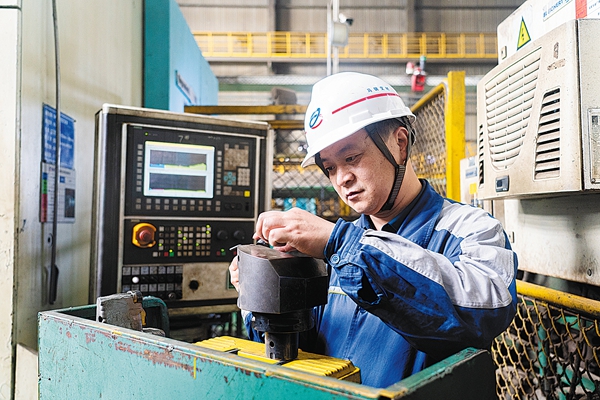A wheel maker helps drive development


"It was a very good job admired by other people back then because the iron-and-steel industry was promising in the 1990s," he recalled.
"I worked for the iron-making part at first. Later, I made wheels."
He said he loves the job with all of his heart, although he sometimes has to pull long hours.
He worked without breaks to fill surging orders from 2009 to 2012. He assumed responsibility for upgrading products from 2015 to 2018.
Shen now not only produces wheels but also new methods for manufacturing them.
"My mission is to turn blueprints into actual products," he said.
In 2018, Magang planned to relocate and upgrade some of its equipment.
Shen and his colleagues volunteered to undertake this complicated task and had to work around the clock to move and debug the machines.
One problem was that the algorithm for a part of the tires didn't match the actual wheels. So, he used actual wheels to identify the miscalculation and adjust the system, through several rounds of trial and error.
His professionalism and persistence won respect from the software engineers.
In 2016, Shen and his team tackled problems they encountered in producing bullet-train wheels.
"The wheels should stay balanced during high-speed rotations, which requires extreme precision during production," he said.
"My team and I spent about three months optimizing the production techniques and found that decentralized manufacturing procedures may have been the cause of the imbalances since every tiny imprecision may lead to a relatively big problem."
Shen's versatility compensates for a shortage of machines.
"I'm proud of two things. One is that customers recognize the quality of the products I make. The other is that I've seen my mostly young team members advance," he said.




































